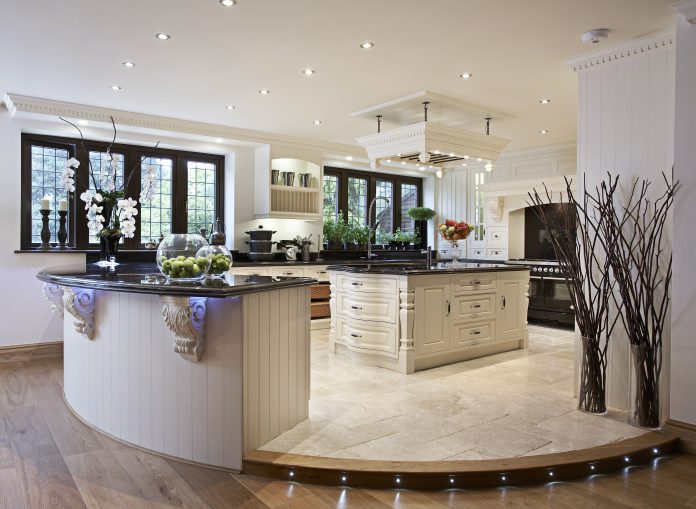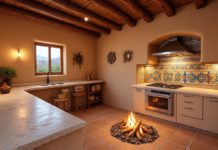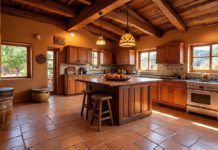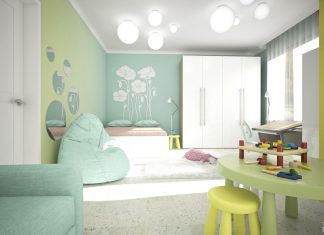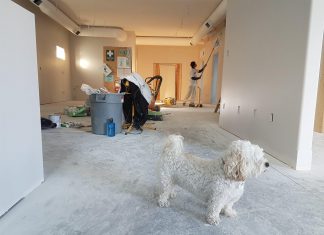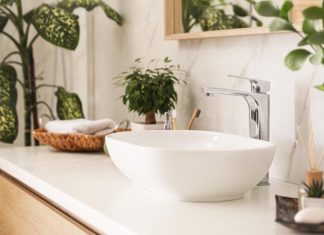The kitchen is a focal point in home design. It’s more than just a practical room it’s a place where memories are created and culinary adventures begin. A bespoke kitchen consultation to installation provides an unparalleled level of customization and attention to detail for customers looking for a kitchen that precisely fits their lifestyle and taste. This article looks into the process from consultation to installation, demonstrating the advantages of choosing a custom kitchen.
What Is a Bespoke Kitchen?
A bespoke kitchen is tailored to a homeowner’s individual needs, tastes, and space constraints. Unlike typical off-the-shelf kitchens, bespoke kitchens are designed to represent the homeowner’s personality and taste, resulting in a one-of-a-kind and highly functional area.
The Benefits of a Custom Kitchen
- Personalization: Every element, from layout to materials, is chosen to reflect your vision.
- Quality Craftsmanship: High-quality materials and outstanding craftsmanship are common features of bespoke kitchens.
- Optimized Space Utilization: Custom designs make the best use of your existing space by adding innovative storage options.
- Increased Property Value: A well-designed bespoke kitchen can greatly increase the value of your home.
The Journey from Consultation to Installation
Initial consultation
The trip starts with a consultation. This is a critical stage in which homeowners communicate their desires, preferences, and needs to the kitchen designer. During this phase, key issues are explored, including:
- Lifestyle Needs: Indicate how the kitchen will be utilized.
- Design Preferences: Style, color palettes, and materials you prefer.
- Budget: An understanding of the project’s financial scope.
Design and planning
- Following the initial meeting, the designer prepares a thorough blueprint and 3D visuals of the proposed kitchen. This phase includes the following:
- Arrangement Design: Optimal kitchen arrangement for functionality and flow.
- Material Selection: Deciding on the best materials for countertops, cabinetry, flooring, and other features.
- Appliance Integration: Ensures that appliances blend seamlessly into the design.
Custom workmanship
After the design is finished, expert artisans begin working on the kitchen’s bespoke parts. This method consists of:
Cabinetry: Cabinets made to specified dimensions and design criteria.
Countertops and Surfaces: Choosing and constructing surfaces that meet both aesthetic and functional needs.
Fixtures and Fittings: High-quality fixtures that improve the beauty and functionality of the kitchen.
Preparing for the Installation
To ensure a smooth installation, numerous preliminary actions are conducted beforehand. The steps are as follows:
Site Preparation: Making sure the kitchen is ready for the new installation, which may include removing old fixtures and appliances.
Coordination: Coordinating schedules with plumbers, electricians, and other relevant craftsmen.
Installation
The installation phase is where the vision becomes a reality.
- Assembly: Building and installing cabinetry countertops, and other custom components.
- Integration: The installation and integration of appliances lights, and plumbing fittings.
- Final Touches: Finishing touches like hardware backsplashes, and decorative accents.
Quality Assurance
Following installation, a full quality inspection is carried out to guarantee that everything meets the highest requirements. This encompasses
Inspection: Look for any problems or flaws in the installation.
Functionality Testing: Ensuring that all appliances and fixtures work properly.
Client Walkthrough: Showing the homeowner around the new kitchen and giving features and upkeep tips.
The significance of professional Guidance
Expert Design Perspectives
Working with professionals gives you access to experienced design insights and new solutions that you would not consider on your own. Designers contribute a variety of knowledge to kitchen design including the newest trends materials, and technologies.
Project management is seamless
A skilled team oversees the entire process, from arranging tradespeople to assuring material delivery on time, This lowers stress and keeps the project on track and within budget.
High Quality and Longevity
Bespoke kitchens that have been professionally planned and fitted are meant to last. The use of high-quality materials and craftsmanship provides long-term durability, avoiding the need for frequent repairs or replacement.
Conclusion
Choosing a bespoke kitchen consultation and installation is a process that will convert your cooking environment into a reflection of your individual style and wants. Every stage, from the initial consultation to the last quality assurance check is designed to achieve perfection. Investing in a custom kitchen improves not just the utility and aesthetics of your house but it also adds significant value. If you want to build a kitchen that is entirely yours, consider going the bespoke route.
